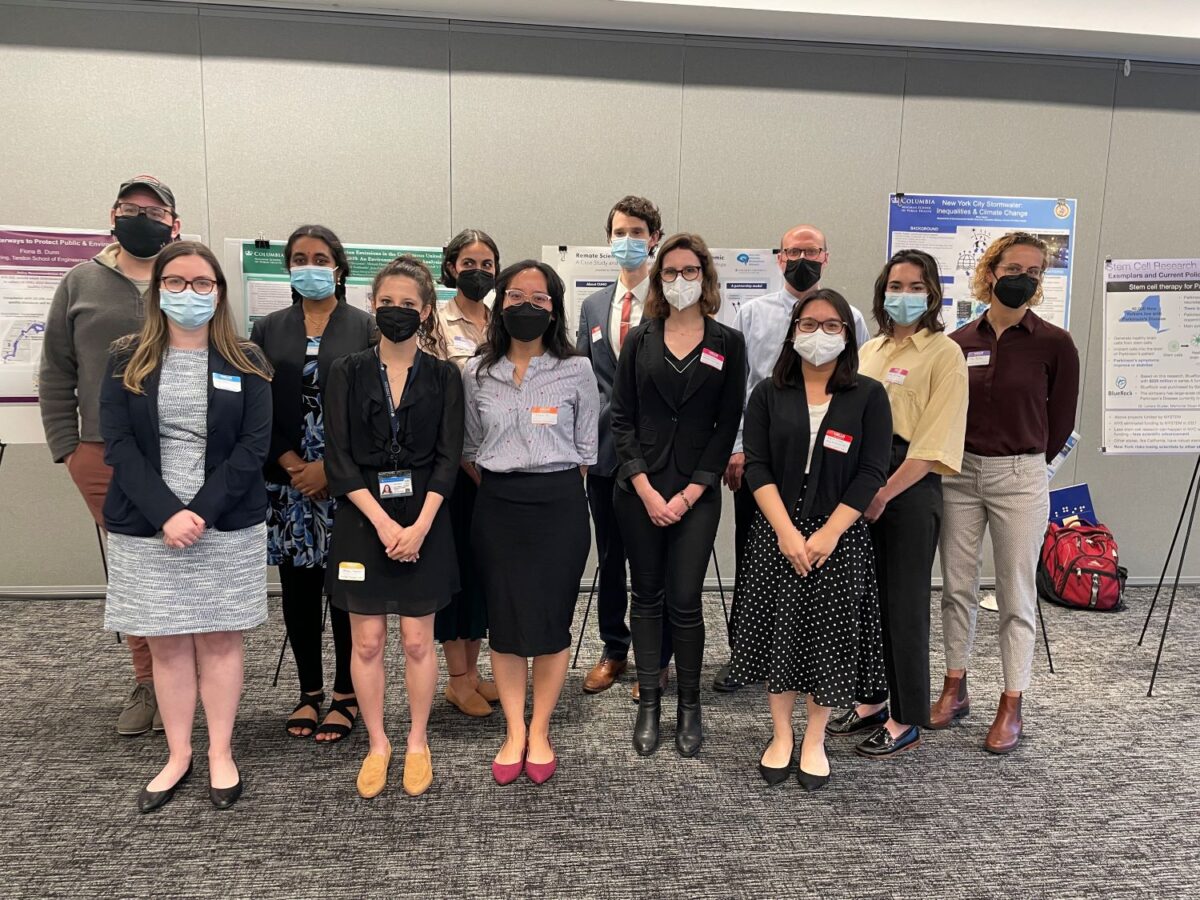As a member and leader of March for Science NYC I have helped organize initiatives designed to enhance how science is communicated during elections and ways to increase scientists’ civic engagement.
Why? Because science and democracy are both iterative processes that require the participants to be informed in order to engage in a way that strengthens the collective effort of each. And to participate fully in today’s democracy requires being knowledgeable on certain scientific topics, and how science and policy intersect.
Yet it can seem daunting to stay up to date on every current issue important in our democracy, especially when it comes to the ever-changing landscape of scientific information. As a voter, a scientist, and an educator, I understand the challenge of grappling with voter issues and candidate viewpoints, staying on top of the latest scientific findings, and communicating those findings to others. However, through creating better communication networks between voters, policy makers, and scientists, such hurdles can be overcome.
Improving the communication networks between science, government, and the public needs creative and effective strategies at multiple levels, and engagement from all participants. The public must be willing to critically engage with scientific information and how science can be used in policy. Scientists must also be willing to communicate their research findings with policy makers and to the public to help inform our policies and our voting choices.
To improve such science communication networks, three strategies were implemented by March for Science NYC and our collaborators. These included inviting academic researchers and activists to share their knowledge to the public, to ask election candidates to answer questionnaires focused on science policy, and to train scientists on how to best communicate their science to policy makers.
By sharing these strategies I hope to inspire you to use some of these engagement techniques, or to come up with your own, in order to use science communication to strengthen our democracy.
Host a webinar series to STEM the Vote
In order to bring scientific research and data into discussions on political concerns we organized a STEM the Vote series of webinars focused on the top voter concerns of the 2020 election. The topics included public health, climate change, gun control, education, food security, and immigration.
Each webinar consisted of a conversation between an academic researcher and an activist whose work focused on similar issues. They shared how both new research findings and events on the ground can together inform how we vote in elections. In this way the connections between science, data, and societal concerns were made evident.
For example, the topic of sustainable agriculture was discussed in detail during our food policy webinar with Dr. Molly Anderson of Middlebury College and Karen Washington of Rise and Root Farm. This discussion ranged from how the spread of agroecological practices in farming was sparked by social and political movements, to the importance of a living wage and food sovereignty to our food system’s security. These conversations helped to make connections between academic and activist perspectives, and highlighted how the expertise of both should be considered in each other’s work. The discussions were live streamed to allow audience questions at the end and were recorded for future viewing.
Take part in Science on the Ballot
While a webinar series can provide information on top voter concerns, it does not illuminate where candidates stand on the issues. To help bring science into the political conversations of those running for office, we participated in Science on the Ballot, which creates questionnaires focused on scientific and technological issues in local and national elections. The National Science Policy Network (NSPN) now organizes this non-partisan initiative.
Scientists and others interested in science policy can volunteer to work on a team together to craft the questions and send them to all candidates running for office. The responses are then made publicly available as a source of information to voters. We have done this at the state level for the 2022 NY state elections, and at the local level for current NY City Hall elections. We’ve received responses from several candidates including Governor Hochul in 2022. In the past, other coalitions have formed successful questionnaires for national and state elections.
NSPN is currently creating questionnaires for the 2024 election cycle, and those interested in volunteering can still join today.
Host a science policy poster session
To be most effective, science communication with policy makers should be strengthened year-round, not just at times of elections. A dedicated time and place for conversations between scientists and elected officials on how scientific evidence can enhance local policy decisions should be established.
One way we have tried to implement this type of interaction is through science policy poster sessions between STEM graduate students, post-docs, and the city council of New York City. We invited academics with an interest in science communication and policy to make posters to share data in a policy relevant way. Training and feedback were provided to the academics to help strategize how to best communicate their science in an accessible way to policy makers. This included highlighting connections between their data and local issues, such as neighborhood flooding, communicating their science with values important to the community, and proposing policies or initiatives their data could impact.

City council members and their staff were able to learn from the scientists and also provide their feedback on how such data and expertise could be used in city government. This event was inspired in part by the John Hopkins Science Policy and Diplomacy group who hosted a similar science policy event, and by other science poster capitol days focused on enhancing funding for research through educating elected officials on what research is being done in the state. However, our focus was less on promoting funding for scientific research and more on enhancing the use of data in local policy issues such as environmental protection, air pollution, and science education.
We organized a workshop on how to host such an event at the 2023 AAAS annual meeting, and are open to helping other groups strategize and plan similar events.
Planning your own initiative
These are just a few examples of what can be done to improve science communication around policy and elections. If you have an idea for a way to use science communication for civic engagement, ask others to join you or partner with a local organization with shared values.
Reaching out to the Science Network at the Union of Concerned Scientists, or exploring their resources is a good way to start. Also, many organizations provide support and funding for such events and initiatives. You can apply for support from the Civic Engagement Microgrant from Research!America, the Science for the Public Good Fund from UCS, and several professional and organizational grants from NSPN.
As we head into the 2024 election cycle, I hope you will find your own way to use effective science communication to strengthen our democracy, so that pertinent scientific information is available to all voters, candidates, and policy makers.

